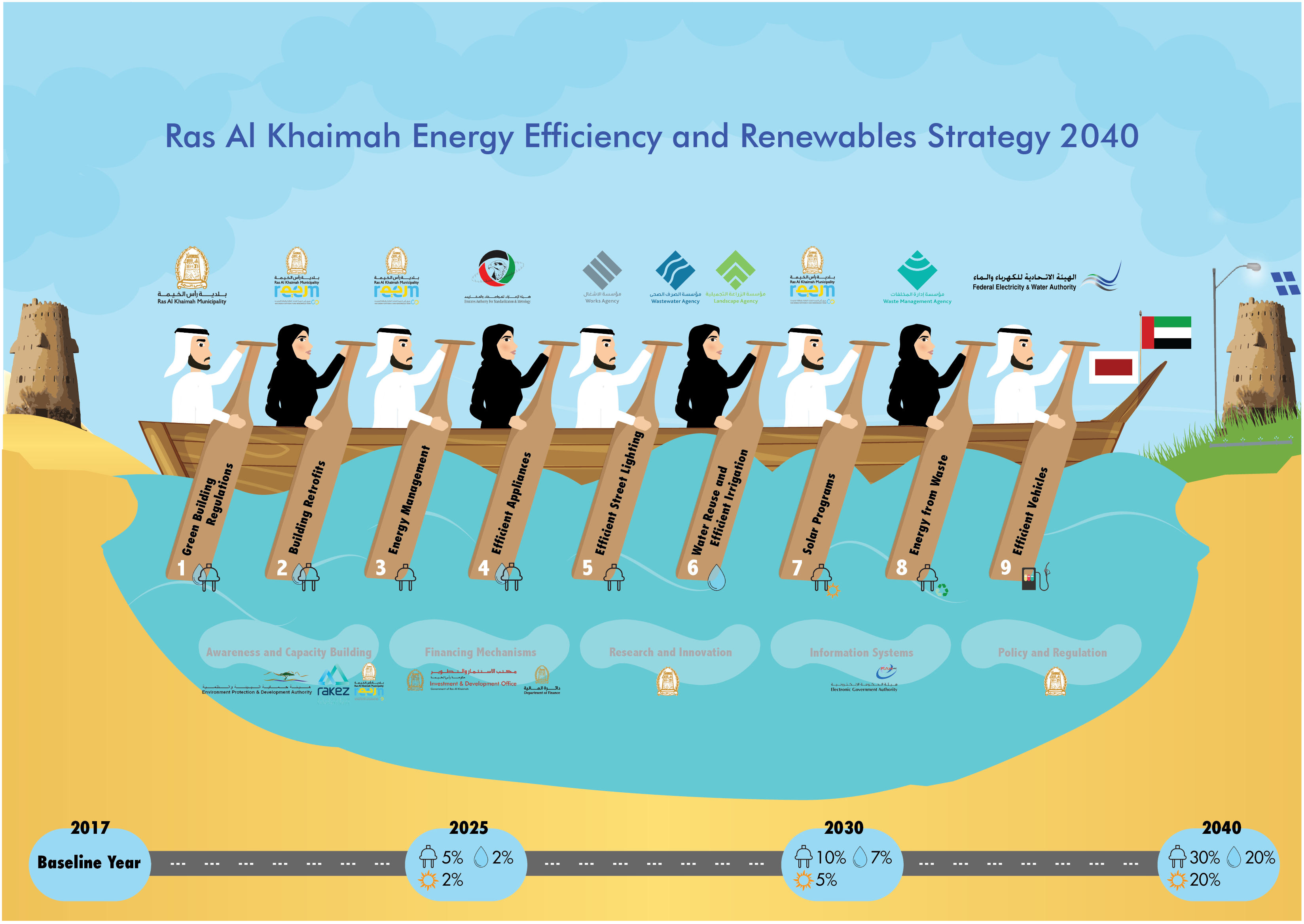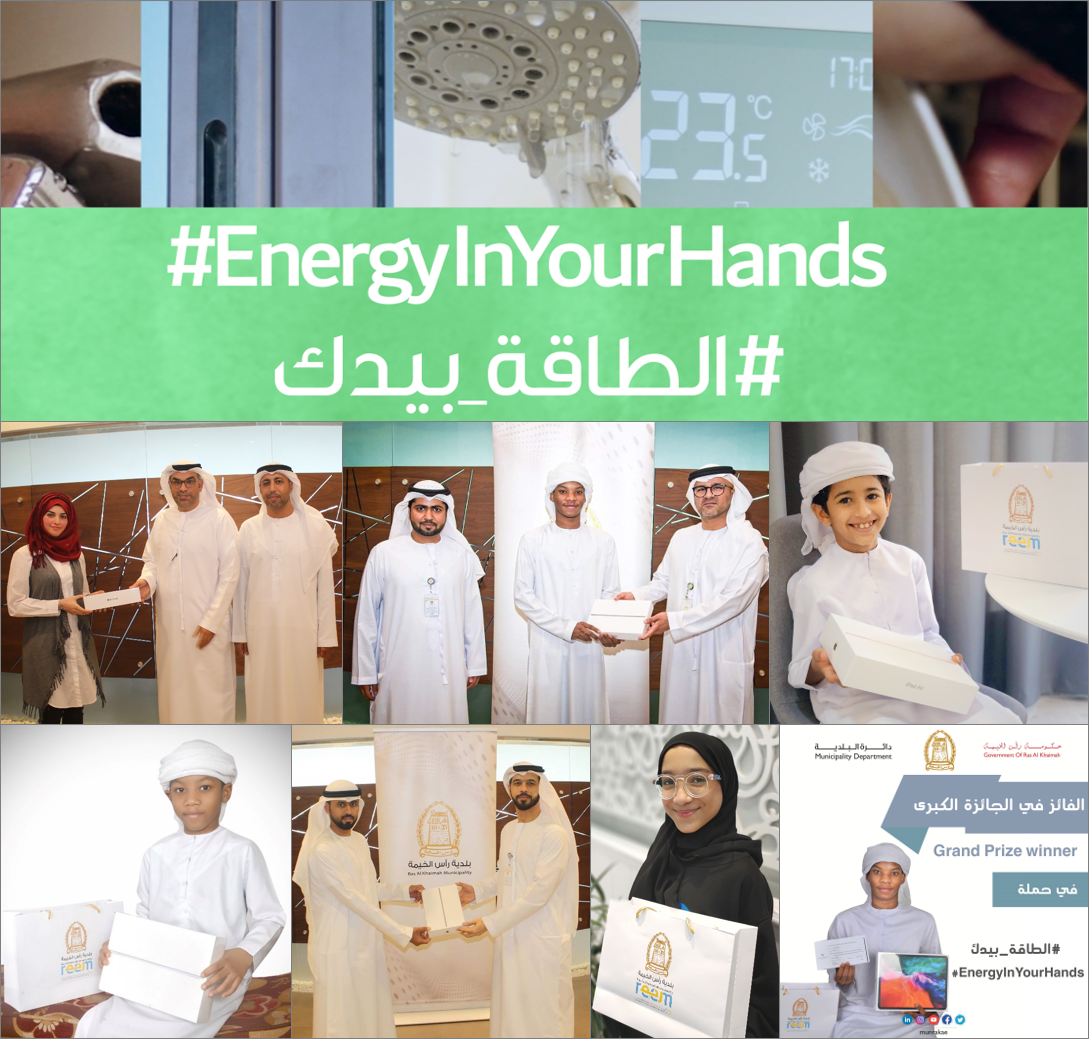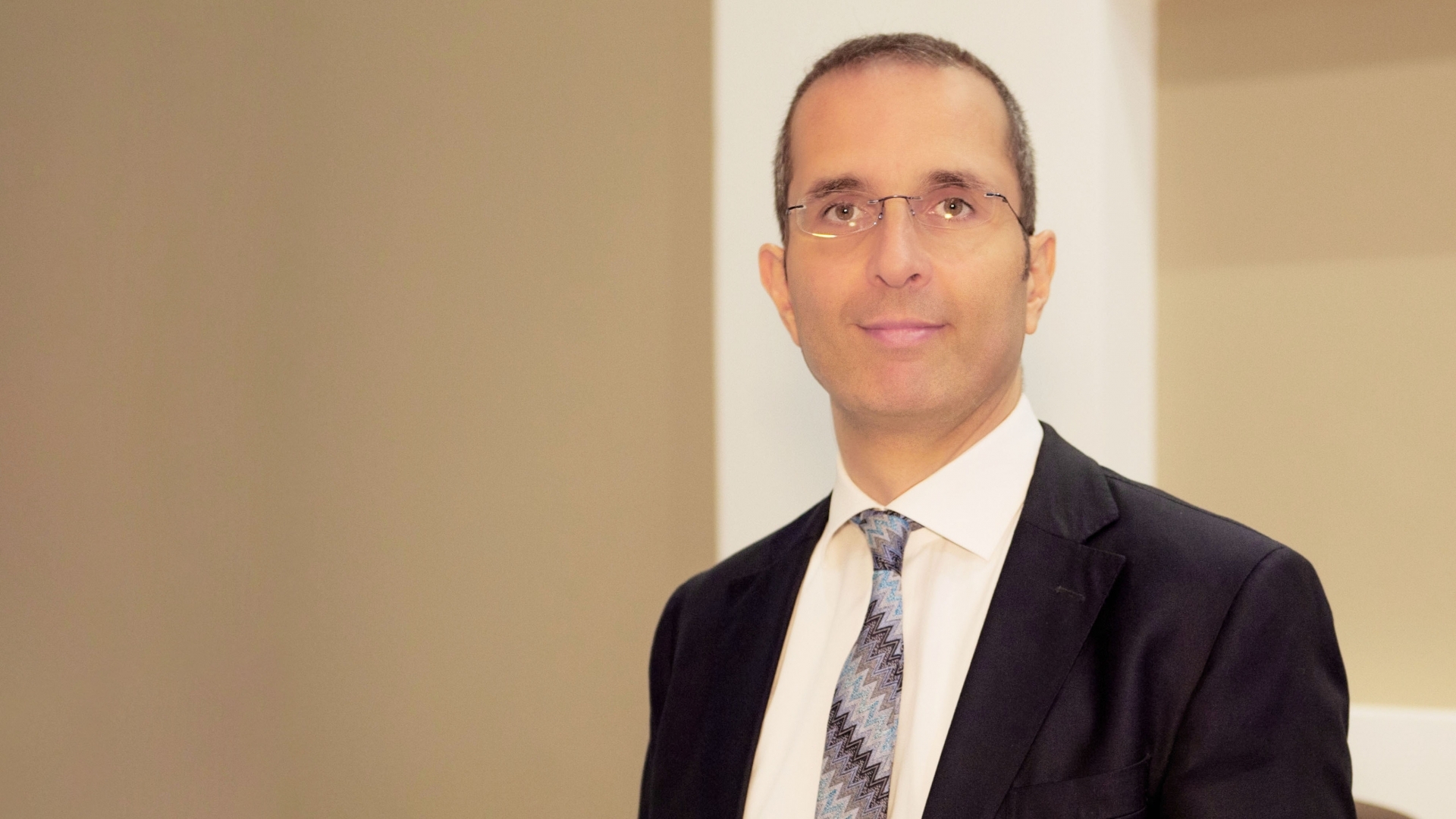Andrea Di Gregorio, Executive Director, Reem, the Energy Efficiency and Renewables Office, Ras Al Khaimah Municipality, speaks with Eurovent Middle East on the progress the emirate has made towards its ambitious sustainability targets, the importance of public and private sector collaborations, and why addressing HVAC is fundamental to the emirate’s energy efficiency initiatives…

Ras Al Khaimah (RAK) Municipality has come a long way in its development as an emirate, not only in terms of its burgeoning tourism activities, but also in terms of being an example of what Municipalities in the Middle East can do when it comes to driving change in renewable energy and energy efficiency. Could you comment on the progress that RAK has made in terms of setting and achieving energy efficiency goals?
Ras Al Khaimah (RAK) Municipality, together with many of the government entities in RAK, established the Ras Al Khaimah Energy Efficiency and Renewables Strategy 2040 (EE&R Strategy) in 2018. By the end of 2019, most of the programmes were already activated.
Today, we are at a stage where we have an institutional set-up present and we have a committee managing the programmes under this Strategy. There is Reem, the Energy Efficiency and Renewables Office in RAK Municipality supporting the coordination of the programmes. Most programmes have a regulatory base, which allows them to progress according to certain standards, and there are already multiple projects ongoing. This is the status today. Our targets are ambitious, we target 30% energy savings, 20% energy from renewables, and 20% water savings by 2040 and we are just at the beginning of the journey. Our mission, and perhaps this is the most challenging part of our work, is that regardless of the economic climate and situation, which may vary in the coming years, we must ensure the strategy remains on track over a long period of time.

Could you comment on the progress that Barjeel, the green building regulations, has made since its implementation?
I think Barjeel is a success story of RAK in recent times in terms of green policy making. Barjeel was started on a voluntary basis at the beginning of 2019 and was made mandatory for all buildings at the end of January 2020. By the end of last year, we had about 2400 buildings permitted under Barjeel. We only have a handful of completed buildings because a lot were permitted just a few months ago, and most are still under construction. There is an important learning process as well in these construction stages.
At over 2400 buildings, we have good market acceptance, because there were no exceptions in the permitting process. It has been a successful start. Of course, Barjeel is a platform for continuous improvement, therefore the process itself foresees a periodic update of requirements. For example, the Municipality is already working on updating some requirements following the update of the efficiency standards of HVAC systems that ESMA is applying from this year.
In addition, there is an area of work we want to investigate, which is how to promote efficiency standards beyond the minimum set by Barjeel. We want to promote actions and developments that go beyond these minimum requirements, and for this we are thinking about a form of a rating scheme allowing developers to have market recognition for extra investments in green buildings.

Could you provide an overview of upcoming projects that RAK is doing in the coming months? How has it adjusted to the “new normal” of COVID?
The Covid pandemic is challenging for most sectors of the global economy. Generally speaking, progress of energy efficiency has not been affected as much as other sectors. This is especially true in the case of renewable energy. In fact, in some geographies around the world we saw an acceleration in renewable energy projects.
In the first half of last year, the International Energy Agency had issued a sustainable recovery plan where they were projecting 1.1% incremental growth in the global economy in a scenario of energy-focused investments. In RAK, we share the same views. We believe that investment in energy efficiency still has high priority, and probably has a higher priority than ever before because of multiple reasons. Firstly, it helps participants save cost. Secondly, it supports local supply chains who deliver energy efficiency solutions.
For these reasons, RAK government is confirming its commitment to the targets and to the capital investments that were planned, despite the new economic scenario. The Building Retrofits programme will continue this year, expanding to a larger number of government and semi-government buildings, and we will soon see a more comprehensive implementation of energy management practices across all government entities as part of a joint project. There is an ongoing tender for solar PV in multiple locations, which brings together government, semi-government and private entities. There is also ongoing work in the development of regulatory standards for the public realm. Barjeel already addresses individual buildings, and the Municipality is now working on sustainability standards for the public realm, promoting more sustainable communities.
How much of the success can be attributed to concerted efforts towards unlocking the potential that energy efficiency in the HVACR sector offers, considering other initiatives tend to tackle “low hanging fruits” rather than the more complex systems that contribute to energy consumption?
HVAC, being a major contributor to the energy consumption of buildings, is, for us, probably the highest priority in our programmes for existing buildings. We tend to target retrofit projects and energy management projects with a payback of less than five years. This typically allows significant upgrades of HVAC, through either replacements or improvements with systems like adiabatic cooling. There is almost always some significant value that can be unlocked with HVAC in existing buildings.
Also, HVAC design choices are important for the efficiency of new buildings. For this reason, they are at the core of Barjeel, which for example promotes standards that are higher than the minimum requirements of ESMA in terms of efficiency of air conditioning systems.

It makes sense to make a point here about collaboration with the private sector. As I said, our programmes in RAK generate demand for more efficient systems and promote the development of a local supply, but of course the government can’t do everything. Here, we look to the private sector to step in and take advantage of the pipeline of opportunities that are being generated. The 2400 buildings permitted under Barjeel are 2400 buildings that need efficient HVAC. If we retrofit hundreds of buildings, that’s hundreds of buildings that need more efficient HVAC. We want the private sector to benefit from this value pie, and also help us increase the size of the pie.
That’s why RAK government has put in place systems of incentives for companies to establish a local base in RAK. These incentives range from lower set-up costs, advantageous rents, better support in business development and a number of other benefits deployed through RAKEZ, the free zone, and the Department of Economic Development. This will help us establish an ecosystem in RAK that will work as a multiplier of the government efforts.
Could you talk a little bit on what RAK, and the Reem office is doing, in particular when it comes to educating and providing awareness to the citizens of RAK about saving energy? How much work is placed on building awareness among people to drive a change in their habits? Could you talk on the changes that you have seen as a result and what you hope to see down the line?
Awareness is a very generic term and, for us, it’s important to understand awareness in the context of its purpose. Initially, when we activated the EE&R Strategy, the main objective was to have entities participate in the programmes. The awareness was directed towards stakeholder entities, to make sure they were taking part in the programmes, and to the supply chain, to make sure they were knowledgeable of the standards.
More recently, we have started expanding awareness to larger societal segments, including the general public. In this area, the main objective is to promote more conscious consumption behaviors. The UAE, and also RAK, has a fairly high energy intensity in buildings and part of this is due to consumption behavior.

Last year, we ran two campaigns, one for schools called the “RAK Energy Innovation Competition” under the hashtag #RAKinnovates which drew the participation of more than 50 schools. It was quite successful with over 120 projects submitted by students proposing ideas on how to improve and promote better energy consumption in their community. The winning teams under this competition have been recently awarded.
There was also a campaign for the general public, called “Energy In Your Hands”, where residents were asked to showcase examples of good consumption behaviors and we received hundreds of submissions from residents across different social media channels. We launched an initiative called “RAK Energy Efficiency News” as well, where we publish short videos on energy efficiency projects. Some examples are the solar carport installation at the Municipality and retrofit projects of the Municipality and RAKEZ. Another campaign that is ongoing this year is “Energy Efficiency Tips”, where we issue weekly energy efficiency advice for residents. We also have something very interesting in our plan, between a programme and an awareness campaign, that will be launched later this year.
How much of the success and movement that Reem office has made can be attributed to cooperation, considering RAK, and the Reem office in particular, has been active in spearheading collaborations with a number of entities over the years? Could you comment on the value that collaboration between the public and private sector will bring when it comes to overarching sustainability goals?
As you can see from the formulation of our strategy, collaboration is key to our success. The strategy consists of a collection of programmes with a dedicated government entity managing each programme and part of a committee of entities that meet regularly. So, collaboration within the government is part of the institutional set up of the EE&R Strategy.
In the new circumstances following the Covid pandemic, we are also expanding and exploring new collaboration models with suppliers that are very much focused on risk sharing and flexibility. This is working already with some contracting mechanisms that have seen new methods of collaboration. An example of this is a recent government-wide retrofit of buildings, where contracting mechanisms are structured in a flexible way to take into account uncertain circumstances.
We want more than this, for example we also seek collaboration from the supply side in terms of business development. We see the private sector as a multiplier of our efforts, and we want them to be a multiplier also in business development for sustainable energy.
Collaboration with peer institutions in other geographies is also important for us. Our programmes and regulations were developed with the help of consultation panels including many local and international organisations, such as energy agencies that contributed knowledge of their programmes. We are benefiting from knowledge exchanges about industrial programmes and residential programmes, and these will be applied in upcoming initiatives.
We also deal with Trade Associations. This is more to connect with potential suppliers, to make international supply markets aware of the size and types of opportunities available in RAK, and accessible through RAK in the Middle East. We are also collaborating with universities and research institutions when it comes to specialised expertise, training and involvement of the youth in our programs.
Could you comment on the importance of associations, such as Eurovent Middle East, in serving as a bridge between the private and the public sector? How do such associations help promote a more cohesive dialogue that can move the needle in these regulatory affairs?
Associations of this type are a natural counterpart for us, from a few different perspectives. We have common interests in terms of awareness -- awareness of the final users and of the buyer market. They can also be good partners for capacity building, because they could provide support for our training programmes, and help their member organisations access our programs. Another important thing is that they can help us in promoting the adoption of higher technical standards, and in fact some of them are also part of our consultation panels for the periodic updates of our standards and regulations.
Speaking as a representative of the public sector, what is your message to manufacturers in the HVACR industry in terms of what support they need to provide to government entities such as Reem, which is dedicated to energy efficiency?
As I mentioned, there are plenty of opportunities for HVAC manufacturers and distributors who can deliver high standards of product quality and service levels. We would like to have them more present here and help us develop the local market. Our office in the Municipality doesn’t typically buy their products directly but it is prepared to connect supply and demand. Therefore, industry players who want to have more visibility of areas of opportunity can reach out to us. We are here to support.
For a more a comprehensive overview of initiatives, programmes, and strategies within Ras Al Khaimah, visit the following links:
